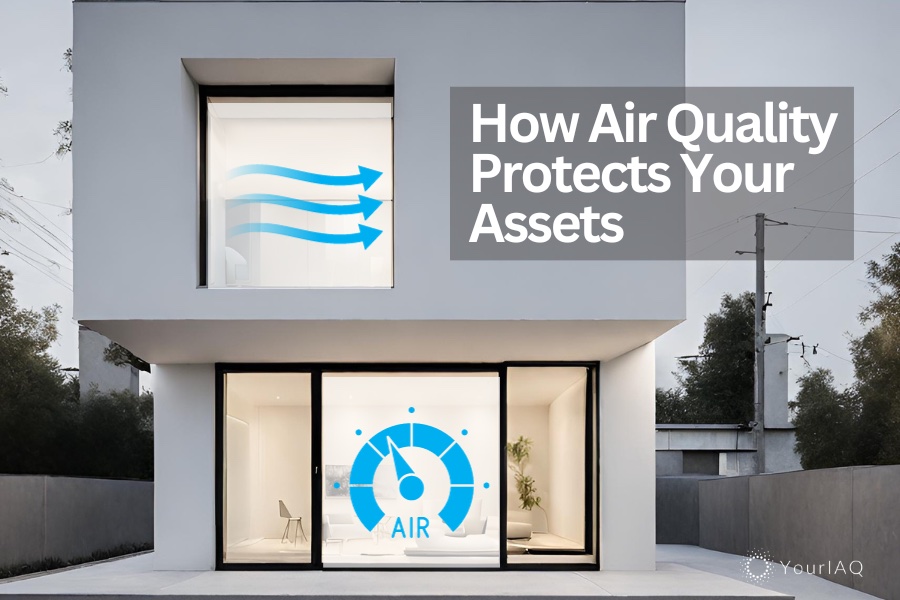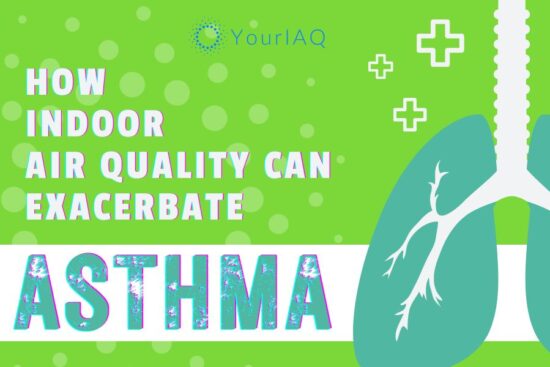
The quality of the air inside our homes and offices is more than just a matter of comfort—it’s an investment in health, safety, and our financial future. Beyond breathing easier, there are significant economic benefits associated with good indoor air quality. In this guide, we’ll discuss how monitoring indoor air quality can protect your assets and offer peace of mind to everyone within your walls.
1. Shielding Your Home from Hazards: Mold, Toxic Gases, and Beyond
Mold and toxic gases are the silent and unseen threats lurking in many homes. If left unchecked, they can lead to health issues for the inhabitants and require expensive remediation. In extreme cases, mold growth can degrade the structural integrity of your home, leading to expensive repairs. With an indoor air quality monitor, you’re not left in the dark. These devices provide real-time alerts about any lurking threats, enabling swift action to prevent minor issues from ballooning into major problems.
2. Enhancing the Resale Value of Your Home
Today’s property buyers have evolved. They’re not just looking at square footage or the age of the roof. In the post-Covid world, indoor air quality is becoming a priority. A well-maintained indoor environment, backed by consistent air quality data, can be a compelling selling point, pushing your property ahead in the competitive real estate market. Many financial institutions and professional associations have reported on the economic benefits of good air quality, giving you a solid foundation for your property’s value proposition. For example, the National Bureau of Economic Research found a positive correlation between reducing pollutants and increased real estate values.
3. Decreasing Insurance Premiums: When Data Translates to Savings
Insurance, for many homeowners, is a significant annual expense. It’s also an area where you can realize substantial savings. Insurance companies appreciate homeowners who are proactive in protecting their assets. By presenting data from your indoor air quality monitor, you can make a strong case for reduced premiums, as a home with monitored and maintained air quality presents a lower risk. In fact, one recent study found that costs of homeowners insurance were nearly 10% cheaper across the 12 states with the best average air quality from 2011 to 2020 (according to the EPA).
4. Preparing for the Unexpected: Early Warnings for Peace of Mind
In many parts of the U.S., events like floods and fires can strike without warning. However, changes in indoor air quality—like a sudden rise in humidity or an influx of certain particulates—often indicates higher likelihood of these events. An indoor air quality monitor serves as an early warning system. When pollutants see unusual spikes, this can be a helpful queue to take preventive measures that safeguard your home and its contents.
5. Guided Renovations and Improvements: Data-Driven Decisions
Indoor air quality monitors do more than just alert. They equip you with actionable data. Over time, this data can help you identify patterns or areas of your home that might benefit from renovations or improvements. For example, consistently high carbon dioxide readings signal a need for better ventilation. By addressing these needs promptly, based on data, you not only ensure the comfort of your home’s inhabitants but also maintain or increase your property’s value.
6. Documentation in Legal Proceedings: Strengthening Your Stand with Solid Evidence
It’s a situation no business or homeowner wants to face: a legal suit concerning the health or safety of your property. Should you find yourself in such a scenario, having consistent data from your indoor air quality monitor can provide critical, unbiased evidence to shield you from liability. Such data can be invaluable to protect your assets and rights.
7. Safeguarding the Contents of Your Home
Your home isn’t just walls and floors—it’s filled with cherished belongings. Whether it’s heirloom furniture or rare collectibles, good indoor air quality helps you maintain the condition, longevity, and value of these items for generations to come.
FAQs: How Air Quality Monitors Protect Your Assets
How do indoor air quality monitors detect hazards?
These monitors use advanced sensors to measure various factors like particulates, gases, and humidity, offering real-time data and immediate alerts for deviations.
How soon can I see improvements in my air quality after addressing issues?
Many factors influence this, but often, once the source of the problem is addressed, improvements can be noticed within hours to days.
Are there any government agencies that emphasize indoor air quality?
Yes, agencies like the EPA (Environmental Protection Agency) frequently provide guidelines and information about indoor air quality and its importance.
Can I use the data for insurance discounts?
Absolutely. Many insurers appreciate proactive measures. Sharing your monitor’s data can provide evidence of your proactive efforts.
Are indoor air quality monitors hard to install?
Typically, they’re designed for ease of use, often with simple instructions and no need for professional installation. You can set up IAQ by Sensables in less than one minute and start measuring your indoor air immediately.






